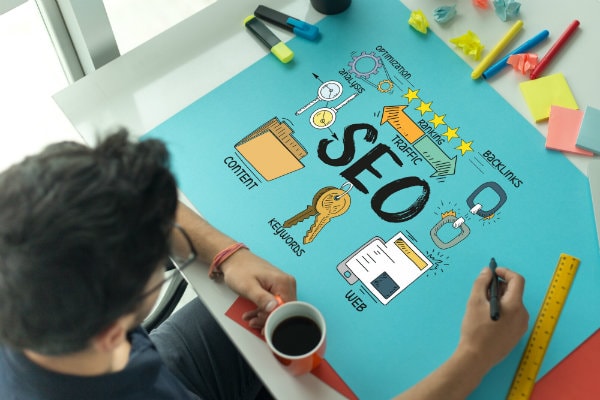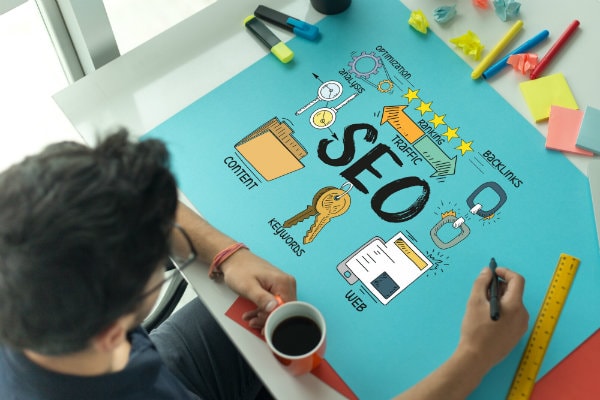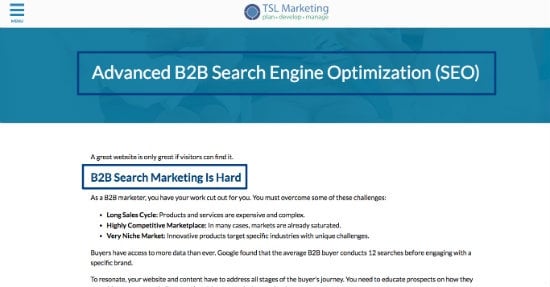SEO: Basic On-Page Optimization Checklist
April 11, 2018

On-page SEO continues to be an important factor when it comes to search engine visibility and traffic.
Having a properly optimized website is good for both users and search engines, which is why it should be an important part of your marketing strategy.
Even doing the most basic on-page optimization can yield some quick wins for your organization from a search perspective — and for users.
Good SEO in 2018 is not just making your site best for the search engines. It also means creating a website that's best for your users.
If your website has usability issues, then you have SEO issues as well.
One of the most important things to keep in mind when optimizing your site is information — useful and relevant information.
It's imperative to tell both users and search engines as much about your website and every page as possible.
Content should be clear and concise. It should serve a purpose.
Every page on your website should include meaningful content.
These days, people prefer visual content, which is why you may have noticed so many websites including more visuals, images, and graphics, as opposed to copy. However, it's always important to have at least a useful paragraph or two that explains what the page is about.
I'm sure you've heard the saying "Content is King," but I like to tell clients that a well-optimized website is king, and content is queen.
Both are extremely important if you want to be found in organic search.
The items below will help you optimize your site and pages the right way so you can be found easier than you are now!
Bonus: Click here to access a free downloadable version of our On-Page Optimization Checklist today.
Meta tag optimization
- Make sure that meta tags are optimized accordingly.
- Your title tag should be no more than 60 characters, and meta description should be around 240 characters.
The meta description used to be limited to 160 characters, but the character count was recently raised.
The meta tag length is based on a pixel size, and the number of characters is the approximate size.
- The title tag should include a keyword that you want to be found in search for, and it should also give an overview of the content on the page.
Title tags are good for SEO and help with usability, plus they will show up when the page is shared on social media sites.
When the page shows up in organic search, the title tag is the first thing the user will see, so it is the user's first impression of your site/brand.
.png?width=600&name=b2b_seo_ranking_serps%20(1).png)
- The page meta description should have a unique selling point, or anything that will make it stand out next to the competitor's ranked pages. This can help the user decide if they should click on your result or the competition's.
Content optimization
- Include an important keyword in the body copy that your website should rank for, in addition to a couple related key terms (synonyms or other variants people search for).
It's important to refrain from "keyword stuffing," which is an old-school tactic to rank a web page.
Good rules of thumb for beginners are to use 750 words of content and to include one keyword and two related terms in the copy.
- On-page content should tell users and search engines exactly what the page is about so there is no room for confusion. If the content includes something that could be confused with something else, there needs to be context to make sure it is interpreted properly.
Optimizing links and page structure
- Make sure that all internal and external links on the page work and are not going to 404 pages.
- Make sure the content is properly structured with header tags.
The H1 tag should be the headline and should include a keyword that gives an idea of what the page is about. The H2/H3 tags are subheadings used to describe the content in subsequent sections on the page.

Here are some more SEO tips:
- Add relevant and meaningful internal links within the content, but do not overdo it. For example, if the content on a page references a service that has its own page, link to the other service page with a targeted key term as the anchor text.
- Always use natural language to ensure your content doesn't appear thin or autogenerated.
- Ensure all page content is relevant, high-quality, and 100% unique on every page.
- Add alt text to all images, including a keyword related to a page that best describes the image. Related post: The Ultimate Guide to Optimizing Images for Site Speed & SEO
Alt text tells the search engines what an image is since it cannot interpret images. It is also used by screen readers and browsers with no image support to describe an image.
Comments